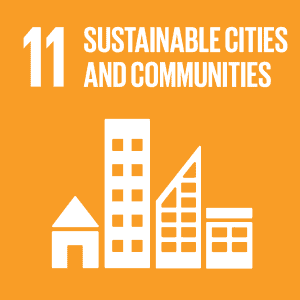Project Profile
Project Location
Village of Kirtland Hills, OhioProject Operator
Western Reserve Land ConservancyProject Type
PreservationProject Credits
6,671Credit Availability
AvailableProject Contact
Hannah Kelling, Southwest Field Director, hkelling@wrlandconservancy.orgWestern Reserve Land Conservancy protected 64 acres of forest in the Village of Kirtland Hills, Lake County, Ohio. The forest consists of oak, pine, maple, beech, and other species of trees, up to 75 years old. Protecting the forest as part of a carbon project provides long-term open space for the surrounding community, watershed protection, human health benefits, and bird and wildlife habitat.
The Project area will eventually operate as a public park, allowing public access to over 1.5 miles of walking trails. Public access will allow pedestrian use for nature enjoyment, nature study, bird watching and other compatible uses not detrimental to the high-quality habitat. The location of this Project in the Village of Kirtland Hills, and its high density of residential occupants, will provide perpetual public access and human health benefits to the surrounding community.
With continued development throughout the Village of Kirtland Hills and Lake County, it is critical to conserve what is left of the forests that once dominated the region. The Project’s protection of open space will contribute to the social and psychological quality of life for residents. Additionally, preserving the forest will help mitigate flooding by absorbing rainwater, slowly releasing it back into the watershed. The mature forest’s stormwater retention capacity will facilitate percolation deep into the ground as opposed to impervious features that cause rainwater to rapidly rush into storm drains, culverts, and waterways carrying pollutants and sediment into the watershed. Lastly, because the Project is located within a migratory flyway, its forested habitat provides essential stopover habitat for neotropical migratory birds, species that rely on large, intact stands of deciduous trees in Northeast Ohio along their migration route. The Project’s loose-bark trees also serve as prime roosting habitat for bats. The forest provides these species with critical breeding, nesting, feeding, roosting, and stopover habitat.
Please visit the project pages linked below for information on other Western Reserve Land Conservancy projects in their carbon program.
Co-Benefits
Forest preservation projects not only reduce carbon dioxide from the atmosphere, but provide ecosystem services or co-benefits that can be quantified. The co-benefits from this project represent a savings (avoided costs) of $129,266 per year, and $5,170,650 over 40 years.
- Rain interception (stormwater management) – 30,623 m3/year, $64,724 per year
- Air quality – 2.3150 t/yr, $5,795 per year
- Energy – cooling (electricity) – 84,234 kWh/year, $11,801 per year
- Energy – heating (natural gas) – 3,356,584 kBtu/year, $46,946 per year
Social Impacts
The 17 United Nations Sustainable Development Goals (SDGs) are an urgent call for action and global partnership among all countries, representing key benchmarks for creating a better world and environment for everyone. Well-designed and managed urban forests make significant contributions to the environmental sustainability, economic viability and livability of cities.
The main SDGs for this project are described below, with more detailed information in the Project Design Document.

This forest will provide numerous health benefits to the community via reduction of pollutants and promotion of outdoor recreation. The property is located along a major interstate, and the trees protected will continue to screen pollutants, reduce stormwater runoff, and provide an important natural space to the community.

The forest will provide increased access for outdoor recreation, reduce pollutants that reach the Grand River, and provide shade for the stream that runs to the river.
 The forest will provide a buffer between a high-traffic area and waterways, and contribute to reduced stormwater runoff and groundwater contamination.
The forest will provide a buffer between a high-traffic area and waterways, and contribute to reduced stormwater runoff and groundwater contamination.
Total Credits Issued: 5,206
- 2024: 5,206 credits issued
Total Credits Sold: 0
Total Credits Retired: 0
Total Credits Cancelled: 0
Total Credits Available for Purchase: 5,206
Registration Documents
Verification Documents
Explore More Carbon Projects
Lake County, Ohio
Hemlock Ridge Forest
Protecting forest for wildlife habitat and water quality.
Mansfield, OH
Western Reserve Land Conservancy Carbon Program - Sandy Cross Forest
Protecting forest for people and habitat
Hunting Valley, OH
Shelter Hill Forest
Forests for community health and clean water
